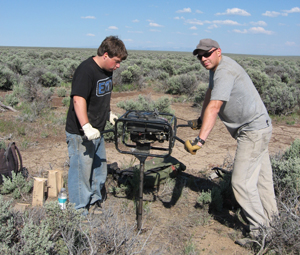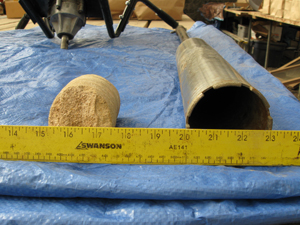Soil
Soils and Biogeochemistry
We expect that plants may respond differently to land management treatments due to differences in the soils found on the research sites. Soil sampling is being conducted to provide descriptive information on research site soils to help explain differences in vegetation responses within and across sites.
Soil cores have been collected on three sub-plots at all of the SageSTEP core plots. One soil core represents each of the three phases of woodland or annual grass encroachment. These cores have been used to identify soil depth to bedrock or a restricting layer, bulk density, coarse fragment, soil texture, organic matter content, total carbon and nitrogen, extractable phosphorus, sulfate, potassium, magnesium, calcium, and sodium. These samples allow researchers to identify important physical and chemical characteristics at each location.
The data provided by these samples can be used to:
- enable researchers to identify abiotic factors that influence vegetation distribution and site recovery following management treatments, including moisture retention and release;
- complete ecosystem carbon and nitrogen budgets for semi-arid systems and land management treatments;
- help identify drivers of infiltration, runoff, and sedimentation processes;
- help identify distributions of ant populations that are important dispersers of seed.
Additionally, surface soil samples (0–5 cm) have been collected from three sub-plots on all of the SageSTEP core plots. Each sub-plot represents one of the three phases of woodland or annual grass encroachment. These samples were collected prior to management treatment and the year following management treatments. Surface soil samples will be used to identify short-term effects of management on soil carbon and nitrogen.
Plant Root Simulator (PRS™) resin probes have been installed on sub-plots representing each phase of encroachment at each core plot on nine woodland sites and four sagebrush-cheatgrass sites. The probes have been replaced twice per year (spring and summer) each year of the study to date. These probes allow researchers to identify temporal variability in nutrient availability and the effect of management treatments on soil nutrient availability.
Publications related to the soils and biogeochemistry research can be found on our SageSTEP Publications page.

Researchers taking a soil core sample.

Soil core sample.
Contact

Site Designed by Kite Media